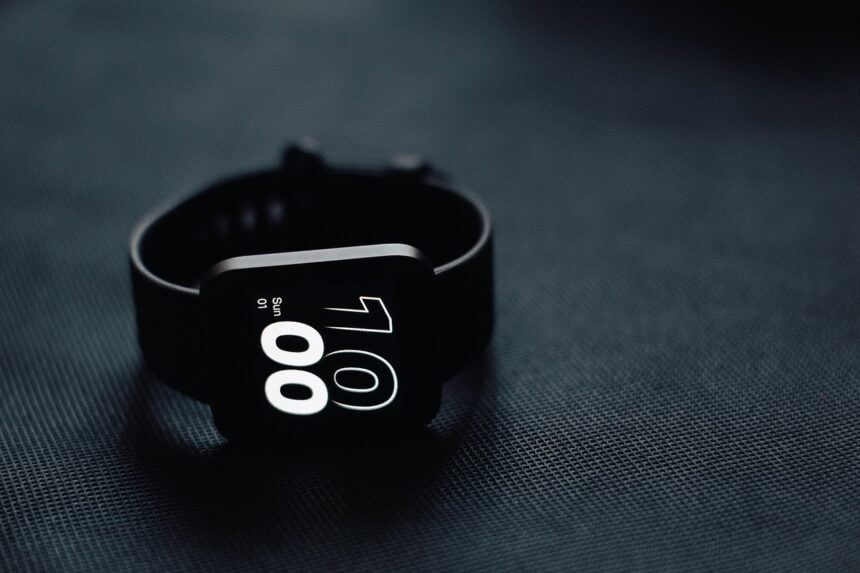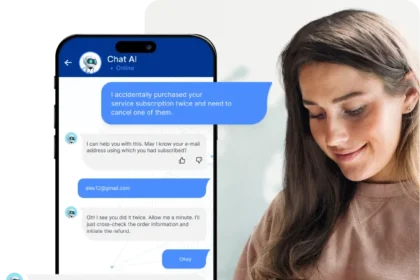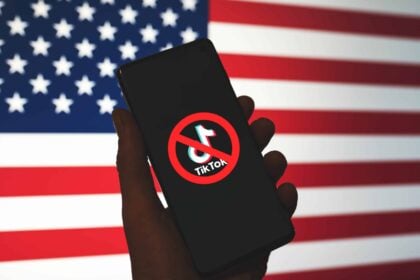Imagine a world where your shirt isn’t just drip — it’s a legit health ally. Smart textiles are finally delivering on that sci-fi promise, stitching sensors and signal into the stuff you put on every morning. From stress alerts to posture nudges, your closet is about to get a software update.
The New Frontier — when clothes become health tools 👗💡
We’ve spent a decade strapping rectangles to our wrists and chests. Cool. But the next leap is quieter and far more intimate: sensing disappears into fabric. That’s the magic of smart textiles — garments that capture real signals in real time without reminding you they’re “devices.”
Before we go deeper, let’s align on what e-textiles actually are. Think flexible sensors woven (not just stuck) into fibers, conductive yarns that act like circuits, and tiny modules that power, process, and transmit. When you wear the shirt, you’re wearing the instrument — and that changes everything about comfort, compliance, and daily use.
“Finally, clothes that do more than cover you up.” — a TikTok user
Why this hits different from wearables 1.0
- Zero extra step. If you’re putting on socks anyway, why not get gait data for free?
- Signal quality. Sensors sitting right where the body moves (chest, shoulders, calves) can sample more consistently than a loose wrist.
- Fashion-first. Seamless integrations mean you don’t have to announce your health goals to the room.
Behind the threads — how smart textiles work 🧵🔍
A great smart garment feels like… a garment. Under the hood, there are three layers working in sync:
Sensors, conductive yarns, and wireless brains
- Embedded sensors measure electrical, mechanical, and thermal changes — heart rate via ECG electrodes, respiration via stretch sensors, skin temperature via micro-thermistors.
- Conductive threads stitch those points together into signal paths while surviving bends, sweat, and spin cycles. A standout example is a laundry-friendly smart shirt using conductive thread that routes signals through embroidered interconnects — clever engineering that feels like ordinary stitching.
- Wireless modules handle local processing and beam data to your phone or the cloud over BLE or Wi-Fi, then sleep to save battery.
Everyday translation: imagine a tee that notices your breathing cadence creeping up during a stressful call and buzzes a breathing prompt. Or socks that quietly log your step symmetry during recovery from an ankle sprain. No chest straps. No charging anxiety. Just clothes.
From data points to decisions — your wearable-powered twin 🧬
Raw streams aren’t the goal; better choices are. That’s where the digital-health concept of a “twin” gets useful: an evolving model of you that maps inputs (sleep, load, mood, environment) to outputs (readiness, risk, recovery). If you want the 101, here’s how wearable data fuels your personal digital twin — the bridge from sensors-in-fabric to “hey, skip the late workout; your HRV tanked.”
What this unlocks:
- Micro-interventions. Two-minute breathwork when your shirt flags rising physiological stress.
- Injury avoidance. Gait drift pops up during a run? Shoes feel fine, but your calves say otherwise.
- Medication and condition monitoring. Passive signals can hint at flare-ups before you feel them, prompting you to check in with a clinician.
Field-tested today — athletes, recovery, and everyday wellness 🏃♀️
Elite sports often preview consumer trends. Integrated garments shine where compliance and comfort matter under stress: long training blocks, travel days, and in-game analytics. For a bird’s-eye view of how sensors and signal intelligence have changed training, dive into wearables changing how athletes train — then imagine that logic moving from compression shirts to your weekday wardrobe.
Use cases already working:
- Endurance: Respiratory rate stitched into base layers guides pacing on long runs without fiddling with a watch.
- Court & field: IMU-laden sleeves quantify throwing mechanics and load management.
- Rehab: Smart socks flag asymmetries so PT plans adjust in near-real-time.
“Imagine your shirt telling you to chill — wild.” — a Redditor
What good looks like (and where the pitfalls are)
Comfort is king. If a seam scratches or the fabric overheats, you won’t wear it — and data you don’t collect is insight you don’t get.
Washability is non-negotiable. Garments must survive real laundry, not lab rinse cycles; embroidered interconnects and encapsulated nodes help.
Battery and modules should vanish. Removable pucks are okay only if they’re tiny, durable, and forgettable.
Safety, privacy, and the FDA playbook 🔐
When a shirt is collecting physiological data, the stakes rise. If you’re building for clinical insights or studies, start by reading the FDA guidance on digital health tech for remote data. Even for wellness-only products, it’s a useful checklist: document signal fidelity, handle consent clearly, and plan for data security end-to-end.
Practical guardrails:
- Granular permissions. Let users opt in to each signal (ECG, temp, motion) and revoke with one tap.
- On-device preprocessing. Strip identifiers and compress at the edge to minimize exposure.
- Transparent value. Show what each metric does for the wearer today, not just in some vague future.
“My clothes syncing stress and sleep to my phone? Sign me up.” — an X user
Pioneers and products: the state of the art
Early leaders taught us what’s possible — and what’s hard. Modular sensor patches were cool, but garments with fully integrated sensing feel meaningfully better.
- Gesture fabrics. Touch-sensitive textiles open up control surfaces on sleeves and seams for music, calls, or adaptive UIs.
- Biometric base layers. Shirts that log ECG, respiration, and activity have moved from niche sport to everyday training and sleep tracking.
- Clinical-adjacent tees. Pilot programs pair continuous vitals with remote care teams for cardiac and respiratory monitoring between visits.
Build vs. buy: a quick stack for teams
If you’re a brand or startup circling the space, here’s a practical blueprint:
1) Materials & sensing
- Choose knit structures that maintain electrode contact without pressure points.
- Use silver-plated or carbon-loaded yarns where durability and skin-safety align.
- Prototype multiple electrode geometries — small changes in placement can double signal quality.
2) Electronics & power
- Go with low-power MCUs and BLE 5+ radios; every milliwatt matters.
- Consider energy-harvesting trickles (motion, thermal) to extend time between charges.
- Make the module removable — laundry and repair paths are easier.
3) Firmware & models
- Implement on-garment filtering for motion artifacts and contact noise.
- Prioritize explainable features (e.g., respiratory rate from stretch, not a black-box guess).
- Calibrate per-user over the first week; personalization beats universal thresholds.
4) App & cloud
- Give clear, actionable readouts (“easy, moderate, hard” days) over raw squiggles.
- Build routines: breathwork prompts, posture nudges, hydration checks.
- Store locally by default with encrypted sync; minimize third-party dependencies.
Durability myths vs. realities
Myth: “Electronics and washing machines don’t mix.”
Reality: With encapsulation, strain-relief, and correct thread choices, they can coexist. Academic teams and startups have published methods that keep signals stable after dozens of cycles — that laundry-friendly smart shirt using conductive thread you saw above is one strong proof of concept.
Myth: “Sensors make clothes stiff.”
Reality: Placement and knit patterns distribute stiffness so most people won’t notice. Your brain’s surprisingly forgiving if fit and breathability are right.
Myth: “Only athletes need this.”
Reality: Night-shift nurses, new parents, and knowledge workers under deadline spikes could all benefit from passive stress and recovery cues.
The horizon line — where smart textiles go next 🔮
Three research lanes will shape the next few years:
- Power, without plugs. Micro-generators and triboelectric fibers could top off tiny batteries from motion and friction.
- Self-care fabrics. Antimicrobial, self-cleaning, or thermoregulating weaves reduce maintenance and boost comfort.
- Color and context. Mood-aware or status-aware textiles that shift tint based on state (or style) will turn heads.
If you want to peek around the corner, scan the latest research on sensory interactive fibers and textiles — it reads like a roadmap for products we’ll actually wear, not just lab demos.
Everyday playbook — how to adopt smart textiles now
Start with a single signal. Heart rate or respiration in a base layer beats a “kitchen sink” garment you won’t wear.
Use it for feedback, not surveillance. Set two or three nudges that you’ll actually act on.
Treat it like clothing. Wash with care, store flat, and replace when the fabric (not the firmware) wears out.
Close the loop. Pair your readings with sleep, nutrition, and training notes to spot patterns.
The social pulse — real-world buzz 🔥
- “Finally, clothes that do more than just cover you up! Can’t wait to try these out.” — a TikTok user
- “My clothes syncing stress and sleep to my phone? Sign me up.” — an X user
- “Imagine your shirt telling you to chill out because you’re too stressed… technology is wild!” — a Redditor
FAQ
What are smart textiles, in plain English?
They’re garments with sensors and conductive fibers that capture signals like heart rate, breathing, temperature, or motion. Put simply, smart textiles turn clothing into quiet, reliable monitors you already want to wear.
Are smart textiles actually washable?
Yes — many designs survive normal wash cycles thanks to robust interconnects and encapsulation. Just follow the tag. The goal is for smart textiles to be treated like clothing, not gadgets.
How does my data get from fabric to phone?
A small module preprocesses signals and sends them via Bluetooth or Wi-Fi. Good systems do edge filtering to reduce noise and protect privacy while keeping smart textiles responsive.
Will this replace my watch?
Sometimes. For steady, continuous metrics, shirts and socks can be more comfortable — but watches still shine for quick interactions. Many people will pair both while smart textiles mature.
Is my health data safe?
Look for clear consent flows, encryption, and deletion controls. Products that mirror the spirit of FDA’s remote-data guidance tend to handle smart textiles responsibly.









